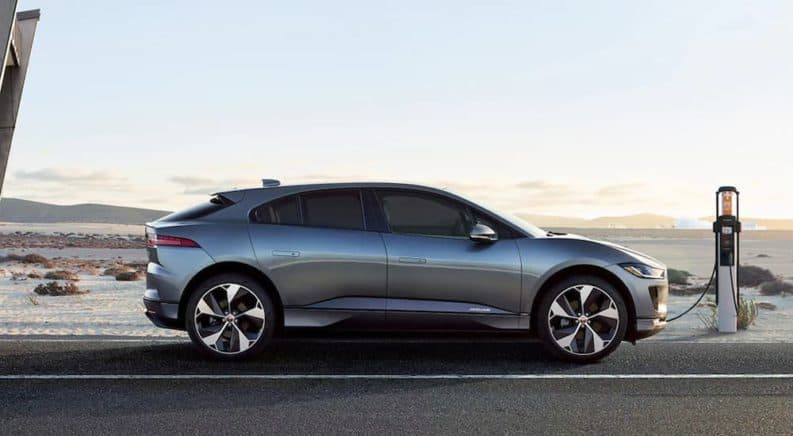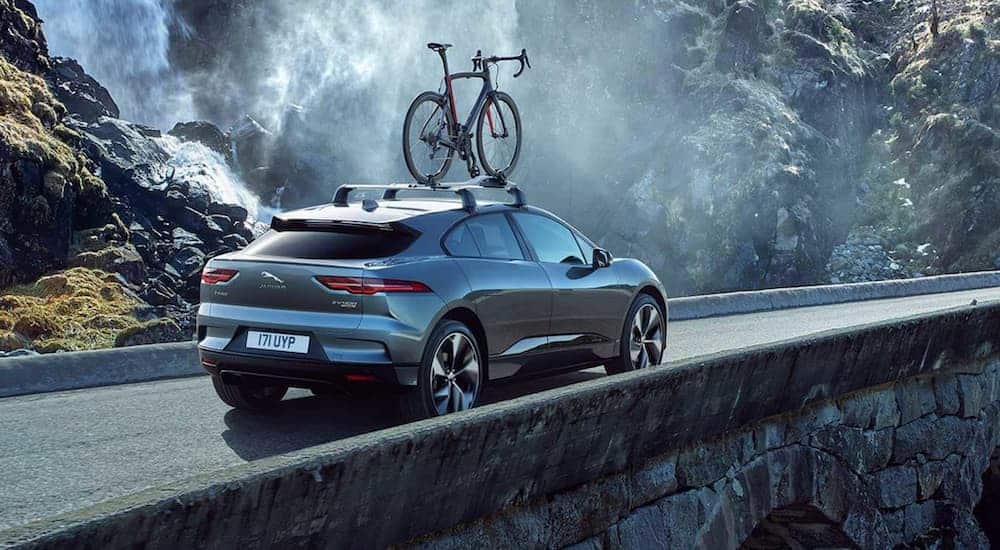When it comes to the topic of sustainability and alternative fuels, we’ve come a long way, especially in the last decade and a half. From the introduction of the mild hybrid powertrain to expansion into plug-in variants, fully-electrified offerings, and fuel cell innovation there’s no shortage of alternatives worth considering. But the current direction of R&D within the automotive industry seems to favor the latter two (if we were to wager a guess) as to the technologies destined to prove the most fruitful. And with only a handful of automakers hopping aboard the hydrogen train, EV seems to be the current leader. Needless to say, we shouldn’t be surprised that Jaguar Land Rover (JLR) has now thrown their hat into the proverbial ring.
Tesla in the Crosshairs
Bottom-line, any automaker currently in (or seeking entry into) the EV game views Tesla as the primary threat. Fueled by a culture of unapologetic innovation and carrying some legit outsider cache, Elon Musk and his hordes of Teslarati have metamorphosed the upstart company into a genuine force to be reckoned with. And with Chevy retiring the Bolt EV (which despite struggling sales had represented the most successful introduction of an accessibly-priced EV offering to-date) many insiders feel that Tesla has newly-inherited the crown.
But if we’ve learned nothing from the recent return of Game of Thrones (and all the seasons leading up to it) it’s a long way to the Iron Throne, a victory which can only be claimed by the most persistent, unrelenting and willing to sacrifice. So with upheavals and turnovers expected along the way, it’s fair to say that most every automaker capable of such commitment stands a chance of making a play. It simply comes down to making the right plays.
Enter the I-Pace
It was 2016 at the LA Auto Show when JLR first unveiled the I-Pace concept, the company’s first foray into EV offerings. With the first production version revealed almost two years later, the I-Pace made an immediate impact. We’ll get to some of those accolades in a bit, but let’s explore some of the innovation that proved it so deserving.
The all-wheel drive I-Pace comes powered by twin motors and a 90kWh lithium-ion battery. With each motor delivering 197 hp and 258 lb-ft of torque, the total power rating of the I-Pace falls in around 394 hp and 516 lb-ft of torque, capable of 124 mph, a 4.8-second sprint from 0-60 and an EPA-estimated range of 234 miles. All in all, a pretty confident offering.
But unlike so many automakers that have struggled stylistically ever since the sensibility of hybrids and crossovers began to us towards the perilous pitfalls of practicality, Jaguar had come up with an offering that actually looked great. Gone were the kind of pandering accents intended to convey iconography which the average consumer might subconsciously associate with electrification. Simple. Sporty. Yet bold in its own right, the I-Pace might just be one of the best looking crossovers we’ve ever seen – and it just so happens to be an EV. What a novel approach that so many have missed.
And even with its battle-wagon aesthetic (sorry, it’s just what springs to mind when I drink in the unapologetic angles and haunches) and low-sloping roofline the I-Pace still manages to offer modest practicality in terms of cargo space. Granted one might never expect the kind of wide-scale accommodation expected of a full (or even mid) sized SUV, but 25.3 cubic feet inside of the truck, and 51 cubic feet with the rear seat folded down means that you can still get things done in the I-Pace. It may not be the vehicle of choice for Home Depot trips, but you could still recruit some company to hit the supermarket with you.
Delivering what has been described as an exciting pedal response, Jaguar has created something truly fun to drive, with strong handling helped by a low center of gravity and responsive steering. A comfortable cabin experience and competitive infotainment system with practical interface make the I-Pace a surprising blend of real-world suitability and forward-thinking innovation. And if Jaguar has, in the past, been criticized for the realization of their interiors, the I-Pace helps to address those concerns with a confident step in the right direction. In fact, JLR has claimed that response to the I-Pace will help to inform some of their aesthetic and comfort-centered plans moving.
So it’s little surprise that the I-pace garnered over 55 international industry awards right off the bat with the words “Best” and “of the Year” showing up almost too many times to count. Applauded for its eco-friendliness, safety, and luxury styling there was no debating that Jaguar was off to a great start. Thus, there should be no surprise that JLR has declared the I-Pace to be little more than their initial foray into the segment.
And if that’s the starting play in Jaguar’s play for EV greatness (which, it is) it’s about as strong an opening move as could be expected from just about any automaker. It certainly lends some real-world credibility to their claims, their strategy outlined (however vague it might be), and the potential of future vehicles built upon the same (or a similar) platform.
Big Plans
Like most every automaker out there, JLR has experienced their fair share of questionable press as of late. With an aggressive restructuring policy designed to ensure the company’s long-term profitability, they experienced some drastic staff cuts with the operational footprint being adjusted accordingly. And while it would be easy for anyone to throw stones at a global automotive entity, it’s important to take their perspective into consideration, looking as far down the line as we can. In the case of JLR, they have acknowledged the possibility of phasing out their entire combustion lineup within the next decade.
This strategy moves forward with the planned replacement of the XJ with an all-electric offering, and the possibility of doing the same with both the XE and XF crossovers. While the latter two might still be too far ahead to delve into further, ether electrification of the XJ sounds quite enticing when spoken from Ian Callum, the head of Jaguar’s design team. Stating that it has to “signify the message of a sports car” and be “something people want to get into and drive” the XJ will inevitable speak to an understanding that sustainability must be tempered with both performance and styling.
At the end of the day, JLR seems adamant in their declaration of forward motion, ushering in what could be an entirely new era for the iconic automaker. It certainly places a lot of weight and burden upon the shoulders of their current restructuring plans but then again, successful reinventions rarely come from small, uninspired changes. They stand as good of a chance as any other automaker to re-emerge as a leader in EV technologies, and if the I-Pace was an example of what they’re capable of, we’ll be keeping a close eye on Jaguar.





